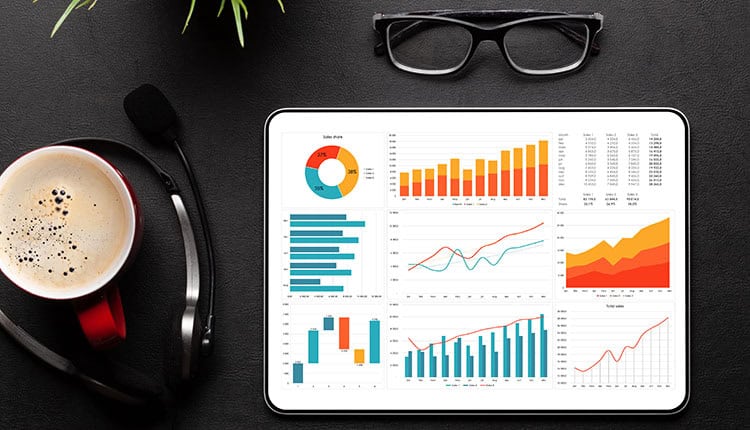Understanding the Power of Influencer Marketing for Business Growth
by Rudy on April 4, 2025 in Online Marketing
In today’s rapidly evolving digital landscape, businesses are constantly searching for innovative and effective strategies to expand their reach, enhance brand visibility, and fuel growth. Traditional advertising channels, while still relevant, are no longer the sole focus for marketers. Instead, businesses are increasingly turning to influencer marketing as a powerful tool that enables them to connect with targeted audiences in a more organic and impactful way. By partnering with influencers who have built a loyal and engaged following, businesses can access new customer bases, increase brand awareness, and drive tangible results. Influencer marketing is no longer just a fleeting trend—it’s an essential component of modern marketing strategies. Let’s dive into how influencer marketing works, why it is so effective, and how businesses can harness its potential for maximum growth.

What Is Influencer Marketing?
At its core, influencer marketing involves partnering with individuals (influencers) who have the power to sway the purchasing decisions of their followers. These influencers may be celebrities, industry experts, or even everyday people with strong online presences—such as bloggers, vloggers, or social media personalities. What makes influencer marketing so appealing is that influencers have already cultivated trust and rapport with their audiences, making their recommendations feel more personal and authentic than traditional advertisements. When businesses collaborate with the right influencers, they tap into a pre-existing community of engaged consumers who are more likely to take action based on these recommendations.
The Rise of Influencer Marketing
Over the past decade, social media platforms like Instagram, YouTube, TikTok, and Twitter have become powerful tools for building personal brands and connecting with vast, global audiences. As these platforms evolved, so did the role of influencers, who gradually began to emerge as a key player in marketing. According to recent reports, influencer marketing is expected to reach a market value of $21.1 billion in 2025, showcasing its growth and significance in modern-day marketing. This surge is largely driven by the fact that consumers are increasingly skeptical of traditional advertising and are seeking more authentic and relatable recommendations. Influencer marketing addresses this demand by providing brands with a way to engage their target audience through trusted, relatable voices.
Influencer Marketing Strategies to Boost Your Online Presence
1. Identify the Right Influencers for Your Brand
The foundation of a successful influencer marketing campaign lies in identifying the right influencers. It’s tempting to focus solely on influencers with massive followings, but bigger doesn’t always mean better. In fact, micro-influencers (individuals with smaller, but highly engaged followings) can often deliver more impactful results than macro-influencers or celebrities. The key to successful influencer marketing is not just reach but relevance. It’s crucial to partner with influencers whose audience demographics align with your brand, whether it’s in terms of interests, age, gender, or geographic location. This alignment ensures that your message resonates with the right people.

For example, if your brand offers eco-friendly products, collaborating with influencers who promote sustainability and green living will create a more organic connection with their followers. Additionally, influencers with niche audiences are often able to generate higher engagement rates because their followers value their opinions more closely. The smaller the influencer’s following, the more likely the audience feels personally connected to the influencer, which translates into a more trusting and responsive audience.
2. Collaborate on Authentic Content
Authenticity is the cornerstone of effective influencer marketing. Influencers are successful because they have built a loyal and trusting audience who values their opinions and content. Therefore, any content created as part of your influencer marketing campaign must feel natural and aligned with the influencer’s usual style. Forcing an influencer to post an overly promotional or scripted message will likely alienate their audience and diminish the impact of the campaign.
Instead, work with the influencer to create content that feels genuine and in line with their personal brand. For instance, if you are a fashion brand, have the influencer integrate your products into their daily wardrobe posts in a way that feels authentic to their style. Or, if you're in the health and wellness industry, a fitness influencer could demonstrate how your product fits into their routine in an unscripted, down-to-earth way. This approach not only increases engagement but also ensures that the content feels real and relatable, rather than an overt advertisement.

3. Use Influencers to Build Trust and Social Proof
Trust plays a pivotal role in consumers’ decision-making process. When an influencer promotes a product or service, their followers are more likely to take their word for it because they’ve developed a sense of trust over time. This is where social proof comes into play. Social proof is the psychological phenomenon where people rely on the actions and opinions of others to guide their own decisions. Influencer marketing leverages this principle by using the influencer’s credibility as a form of social proof.
For example, if a well-respected beauty influencer shares their positive experience with your skincare line, their followers are likely to feel more confident in trying your products. This form of endorsement acts as a recommendation from a trusted friend, which is far more persuasive than traditional forms of advertising. The trust built between influencers and their followers is invaluable—when you harness that trust, your brand gains credibility and authority, driving consumer interest and ultimately boosting sales.
4. Run Giveaways and Promotions
Giveaways and promotions are a fun and effective way to increase engagement and generate excitement around your brand. Influencers can help amplify these campaigns by encouraging their followers to participate. Whether you’re offering a free product, an exclusive discount, or a special offer, giveaways create a sense of urgency and incentivize potential customers to take action. For example, you could run a giveaway where followers are encouraged to follow your brand, tag friends, or share the post for a chance to win.

Not only does this increase visibility, but it also boosts interaction with your brand. When followers share content or invite friends to participate, your brand’s reach expands organically. These types of campaigns can also lead to higher conversion rates, as followers are more likely to engage with your brand when they feel incentivized. Additionally, you could offer exclusive discount codes through influencers, driving immediate purchases and increasing the likelihood of long-term customer loyalty.
5. Track, Measure, and Optimize Campaigns
Like any marketing strategy, influencer marketing requires careful tracking and optimization to ensure maximum effectiveness. It’s crucial to monitor key performance indicators (KPIs) such as engagement rates, website traffic, conversions, and sales. By using analytics tools, you can gain insights into which content and influencers are performing the best, allowing you to refine your strategy for future campaigns.
For example, if you find that a particular type of content (such as product reviews or unboxing videos) generates more engagement, you can prioritize that type of content in your future influencer partnerships. Additionally, tracking the ROI (return on investment) of your influencer campaigns will help you determine whether your efforts are delivering the desired results and if adjustments need to be made. Continuous optimization based on data ensures that your influencer marketing campaigns evolve and remain effective over time.

Conclusion:
Influencer marketing is a dynamic and highly effective strategy that can help businesses reach new audiences, build trust, and drive growth. By strategically selecting the right influencers, collaborating on authentic content, leveraging social proof, running engaging promotions, and continuously optimizing campaigns, businesses can unlock the full potential of influencer marketing.
Ultimately, the key to success lies in fostering genuine relationships with influencers whose values align with your brand and whose audience is likely to be interested in your products. When executed with authenticity and purpose, influencer marketing has the power to deliver impressive results, driving both brand awareness and conversions. As this marketing tactic continues to evolve, staying ahead of trends, listening to your audience, and adapting to the digital landscape will keep your business on a path toward success. With the right approach, influencer marketing can be a game-changer for businesses aiming to thrive in an increasingly competitive online world.
Author: Rudy Labordus
Rudy Labordus is an Internationally acclaimed author, marketing strategist and speaker. He has been instrumental in helping launch and develop several multi million dollar businesses around Australia and excels in developing innovative, strategic and creative solutions that produce exceptional results for his clients.
